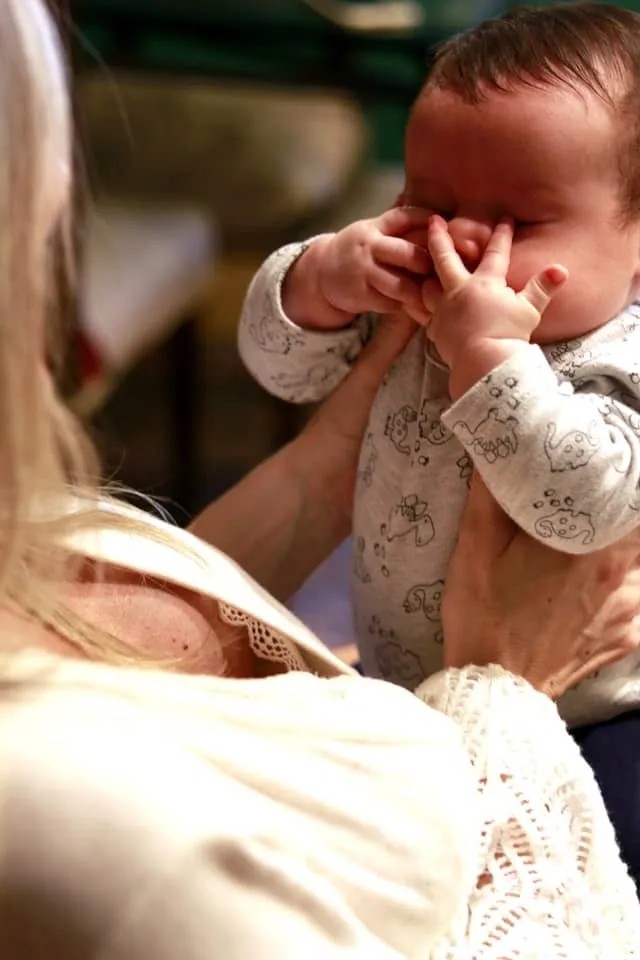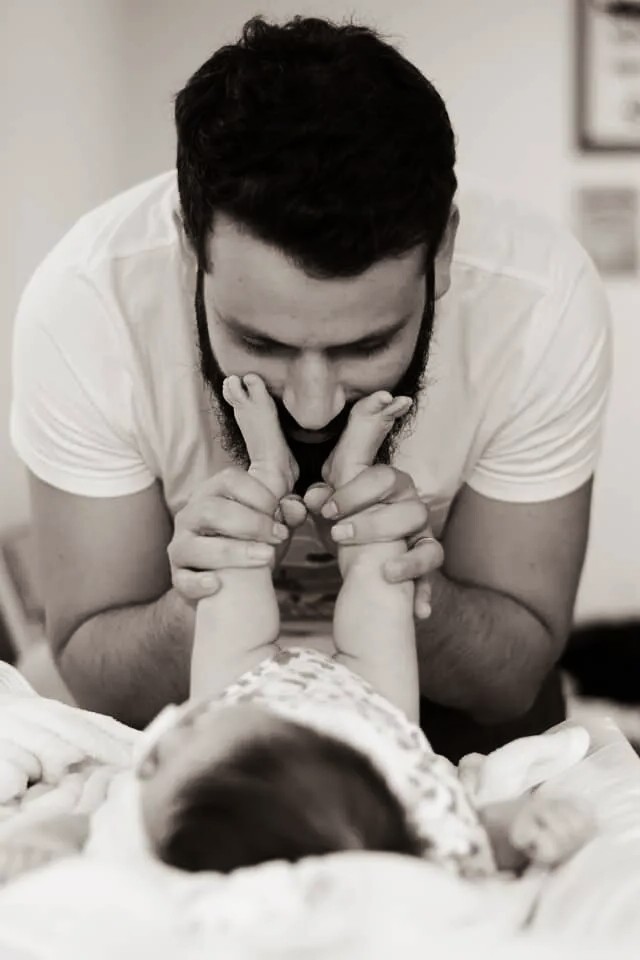Table of Contents
Why babies cry and how responding builds trust is a vital topic every parent needs to understand. Crying is not just noise—it is your baby’s very first form of communication. From hunger and tiredness to the need for comfort, babies use crying to express their needs and emotions. When parents respond with love, consistency, and care, they are not only soothing the immediate distress but also building a foundation of trust and security that shapes the child’s emotional and social development. This early connection creates stronger bonds, reduces stress, and nurtures confidence in both the baby and the parent.
Why Do Babies Cry? Understanding Their Signals

Crying is the very first language a baby learns to speak. While it can feel overwhelming at times, it’s important for parents to know that babies cry to communicate, not to misbehave. Each cry carries a signal, and learning to understand these cues helps parents respond with confidence. This is at the heart of why babies cry and how responding builds trust.
🔑 Common Reasons Babies Cry
1. Hunger

One of the most common signals. If your baby hasn’t eaten in a while, crying is often their way of saying it’s feeding time.
2. Sleepiness or Overstimulation
When babies are tired but can’t fall asleep, or when they are exposed to too much noise and activity, they often cry to release stress.
3. Physical Discomfort
A wet diaper, tight clothing, or tummy troubles like colic can cause discomfort that leads to tears.
4. Need for Closeness
Sometimes babies simply want to be held. Crying in this case signals a need for warmth, security, and a parent’s touch.
5. Pain or Illness
Unusual or persistent crying may be a sign of pain or illness. In such cases, it’s always wise to consult a healthcare professional.
👉 By recognizing these signals, parents not only soothe their baby more effectively but also show that they are attentive and reliable—building trust step by step.
Why Responding to Baby’s Cry Matters
Every time a parent responds lovingly to their baby’s cries, they send an important message: the baby is safe, loved, and their needs matter. This isn’t about spoiling them—it helps build trust, emotional security, and lays the foundation for healthy growth. By being attentive, parents show that the world is reliable and caring, which supports the baby’s emotional and social development from the very beginning.
🌱 Builds Emotional Security
When parents consistently respond, babies learn that the world is safe. This security helps them manage stress and builds resilience as they grow.
🧠 Supports Brain Development
Responsive caregiving reduces stress hormones and supports healthy brain development. Babies begin to associate comfort with their caregivers, wiring strong pathways for trust and bonding.
🤝 Strengthens Parent-Child Bond
Responding shows babies that their cries are heard and valued. Over time, this nurtures a deep emotional connection and mutual trust between parent and child.
📈 Long-Term Benefits
Research shows that babies who receive responsive care often grow into children and adults who are more confident, independent, and socially connected.
👉 Responding to your baby’s cry is not just about soothing in the moment—it is about building a lifelong foundation of trust, security, and love.
How Responding Builds Trust Between Parent and Baby
Why babies cry and how responding builds trust becomes most visible in the everyday moments of caregiving. When parents answer their baby’s cries with comfort and consistency, they create a relationship built on security and reliability. This trust becomes the emotional foundation for the child’s future.
🧩 The Role of Attachment
Psychologists describe this process through attachment theory. Babies who experience quick, loving responses to their needs develop a “secure attachment.” This means they feel safe exploring the world, knowing their parents are a reliable source of comfort.
💞 Emotional Resilience for the Future
When cries are answered with patience, babies learn to regulate emotions more easily. This early trust makes them more likely to grow into children who can handle stress, build friendships, and form healthy relationships.
👩👩👦 Everyday Examples of Building Trust
- Picking up your baby when they cry instead of letting them cry alone.
- Using a gentle voice or touch to reassure them.
- Offering comfort at night so they know you’re present even in the dark.
🌟 Long-Term Impact
Trust built in infancy doesn’t end in babyhood. Children who feel secure with their caregivers often show more independence, stronger social skills, and greater confidence later in life
Practical Ways Parents Can Respond to Crying

Understanding why babies cry and how responding builds trust is one thing—putting it into practice is another. The good news is that parents don’t need complicated strategies. Gentle, consistent responses are what make the biggest difference.
🤲 Comfort Through Touch
Holding, rocking, or cuddling your baby reassures them instantly. Skin-to-skin contact is especially soothing for newborns, helping regulate their heartbeat and breathing.
🎶 Use Your Voice
Babies recognize their parents’ voices from birth. Talking softly, humming, or singing a lullaby can calm them while strengthening emotional connection.
🛏️ Create a Calm Environment
Reduce overstimulation by dimming lights, lowering noise, and keeping routines predictable. This helps babies feel safe and lowers stress.
🍼 Check Basic Needs
Always start by checking common causes—hunger, diaper changes, temperature, or discomfort. Meeting these needs consistently shows your baby that you’re attentive.
🌙 Responding at Night

Nighttime crying can be tough, but gentle responses—like patting, shushing, or briefly picking up your baby—help them feel secure without overstimulating. Over time, they learn nights are safe and restful.
Nighttime crying can be tough, but gentle responses—like patting, shushing, or briefly picking up your baby—help them feel secure without overstimulating. Over time, they learn nights are safe and restful.
😌 Stay Calm as a Parent
Babies sense stress. Taking a deep breath before responding helps you approach your baby with patience and warmth, making your response more effective.
you can read more about How to handle when baby cries when mom/dad leaves. by visiting this article
🚫 Myths About “Spoiling” a Baby by Responding
One of the most common concerns new parents hear is: “Don’t pick up your baby too much, or you’ll spoil them.” But science shows the opposite is true. Understanding why babies cry and how responding builds trust helps parents see that babies can’t be spoiled by love and attention.
❌ Myth 1: Responding Immediately Makes Babies Dependent
Truth: Babies who are comforted when they cry actually grow up to be more independent. Secure attachment gives them confidence to explore the world, knowing their parents are a safe base.
❌ Myth 2: Babies Cry Just to Manipulate Parents
Truth: Infants don’t cry to “manipulate.” Crying is their only way to signal needs. Responding teaches them that communication works and builds trust in their caregivers.
❌ Myth 3: Letting Babies Cry Teaches Them to Self-Soothe
Truth: Self-soothing is a developmental milestone that comes with age. Young babies need caregiver support to regulate emotions. Ignoring cries can increase stress and delay trust-building.
❌ Myth 4: Holding a Baby Too Much Will Spoil Them
Truth: Physical closeness, such as cuddling or rocking, strengthens emotional bonds and helps babies feel safe. Studies show you cannot “spoil” a baby with affection.
👉 The reality is simple: Responding with love doesn’t spoil a baby—it shapes a secure, trusting relationship that lasts a lifetime.
you can read more about Why Babies Cry and How Responding Builds Trust
by visiting this page
Conclusion & Call-to-Action
Crying may feel overwhelming at times, but it is simply your baby’s first language. Understanding why babies cry and how responding builds trust gives parents the power to nurture not only calm in the moment but also emotional security for the future. Every time you respond with love, patience, and consistency, you are teaching your baby the most important lesson of all: the world is safe, and you are cared for.
Parenting is a journey of small, repeated moments that add up to lifelong bonds. So the next time your baby cries, remember—it’s not a demand, it’s a call for connection. By answering that call, you’re building trust that will last for years to come.
👉 Call-to-Action:
- Share this guide with other new parents to spread awareness about the importance of responsive caregiving.
- Try one of the practical soothing techniques today and notice how your baby responds.
- If crying seems unusual, persistent, or worrying, don’t hesitate to reach out to a pediatrician for support.






